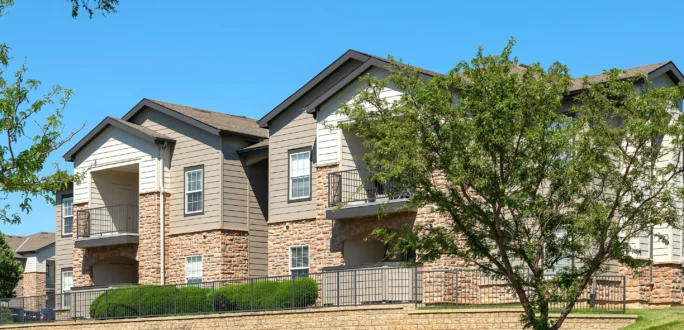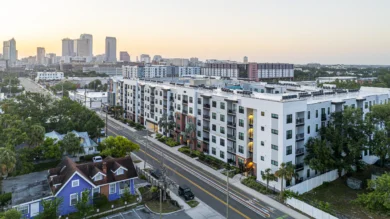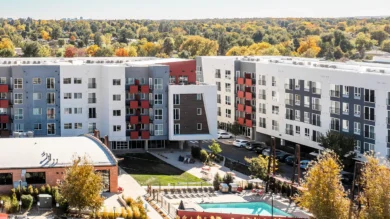
Navigating Price Dislocation: Why Now Is the Time to Invest in Multifamily
 Springfield Apartments, Nashville, TN
Springfield Apartments, Nashville, TN
But as investors take a wait-it-out approach, one premise is often ignored: Multifamily remains an attractive investment, even in the current market.
There is little debate that investors have approached 2023 with extreme caution. The high interest rate environment, coupled with general market uncertainty, has caused transaction volume to decline dramatically. As many investors opt to place their capital in CDs or Treasury Bills, or halt their investing entirely, real estate deal volume has dropped by 74% in 2023.
Complicating matters is a price dislocation, initially thought to last only a few quarters, is now projected to persist for 12 to 18 months and possibly as long as 24.
While little mystery surrounds the inactivity, several factors make the multifamily sector attractive for buyers:
- Tax-efficient returns. While investors are taking hefty tax hits for three-, six- and nine-month T-Bills, returns on multifamily investment can come with a fraction of the taxes. CDs and T-Bills might have a more attractive nominal rate, but an inflationary aspect accompanies the heftier tax consequences. The yield might not hold as much weight a few months or years down the road.
- Multifamily has proven to be resilient. Many make the mistake of fixating on the nominal rate rather than the fundamentals of the investment. Multifamily should be viewed with a long lens, and the current market continues to offer opportunities for long-term appreciation, particularly for stable, well-managed properties. Investors who take a more nuanced look at the total rate of return will discover why multifamily offers a strong long-term play.
- Waiting could be costly. While many investors pause on deals until market conditions change, there is no guarantee that the same deals will remain available. When a market reset begins to occur, investors who waited on the sidelines will be eager to spend, which will make competition for assets fierce. Some investors are sitting back and waiting for the home run, but the properties they waited on might be long gone or selling for a far less attractive price when the time comes.
This is not to unequivocally say that high-return investments in other verticals aren’t possible in the current landscape. They just aren’t likely. Multifamily has an advantage in the fact that people will always need somewhere to live. Plus, owners and operators can implement additional steps to positively sway the outcome of the investment. Property upgrades and other measures can grow net operating income (NOI). Fluctuating cap rate changes can positively impact the bottom line as well. If they produce a negative effect, properties can counteract any losses with NOl-growing initiatives.
While some have alluded to the Global Financial Crisis (GFC) from 2007-09 as a comparison to the current climate, there is little reason to believe a similar economic scenario could unfold. Within real estate, for example, mortgage lenders for single-family homes are much more buttoned up in current times. The haphazard practice of offering mortgages to virtually anyone, regardless of credit history, is firmly in the rearview mirror.
Additionally, approximately 80% of mortgage holders refinanced in the early-2020s and possess solid fixed rates, which was not the case during the GFC. That means consumers ostensibly have more income to spend on non-housing necessities, which limits the chances of a similar crisis. With equity built into homes, lenders feel confident that their default rates won’t skyrocket like they did in the GFC. Lastly, without delving too far into the micro-factors, the market is not showing the same cracks as it did in the months leading into 2007, and many economists are anticipating a full rebound by 2025.
Multifamily has remained stable on the macro-scale, largely because owners that have exhibited even a more risk-averse approach still have solid financing in place. Owners that have mitigated maturity risk through the cycle –meaning few of their communities have loans expiring before 2025 – continue to operate with fixed-rate debt.
These factors support the idea that multifamily remains an attractive vertical in which to invest. From the sector’s long-term resilience, tax-efficient yields and the understanding that competition will be fierce when the market returns, investing in stable, well-managed properties and portfolios could be one of investors’ best bets at the current time.
An adage in the investment world says to be cautious when investors are being aggressive and aggressive when they are being cautious. In the current multifamily landscape, investors would be wise to be aggressive.
This article originally appeared on Multifamily Executive.






